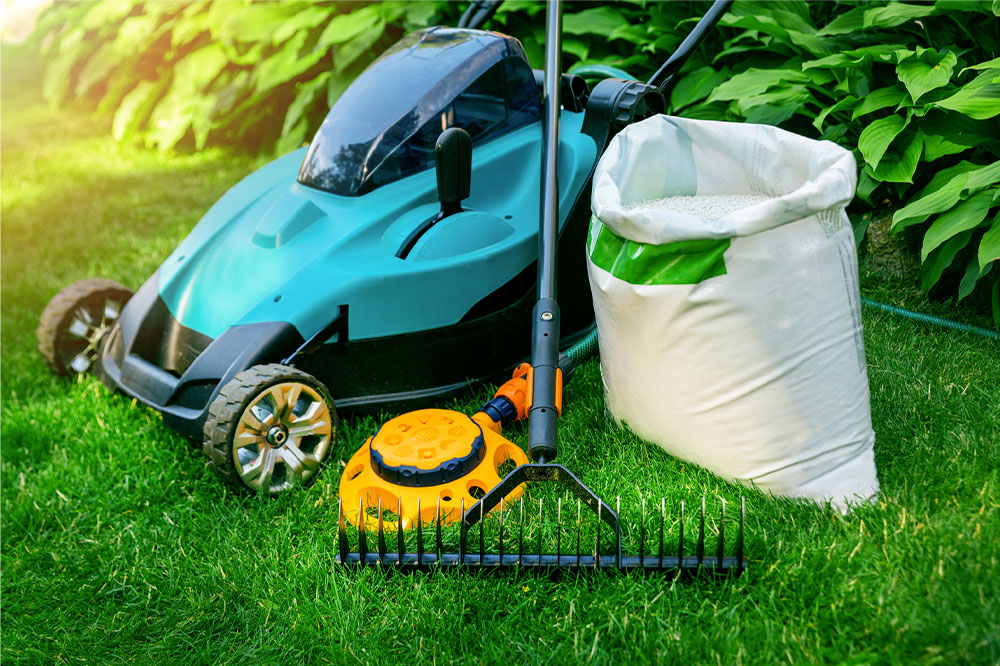10 Easy Lawn Care Tips for a Lush Yard

You’ve put a lot of time, love, and effort into building your home, so it’s only natural that you would want to give it a welcoming yard as well! A lawn can be the central attraction of your property during the summer months and a beautiful space to host your loved ones or just relax under the sun. Here are nine lawn care tips to help you achieve and maintain a beautiful, lush yard.
Test your soil
Before planting anything in your garden, you must know what you’re working with. Testing the soil for its pH, nutrients, and chemical properties can help you take better care of your plants by finding the right type and quantity of fertilizers. It will also help you grow healthier grass, a natural deterrent for excessive weed growth.
Remove thatch
With time, the lawn surface develops a layer of grass stems, roots, clippings, and debris, which impacts air, water, and nutrient permeability into the soil. It can choke your grass, resulting in a dull or dying lawn. This problem is prevalent in lawns that are overfertilized and overwatered. A thatch build-up of 3/4th inches or more in thickness can harm grass health. To check the thatch thickness in your lawn, chop a small section of the turf, and measure the thatch. If it exceeds 3/4th inches, use a power rake or a lawn scarifier to remove the thatch and give your lawn room to breathe.
Prevent moss
Besides thatch, you may begin to notice moss growth on the surface. Moss is common in areas with poor drainage, lots of shade, and weak grass. When left untreated, it can significantly impact your grass’s growth abilities. Taking care of your lawn by giving it the right amount of nutrients and water can keep the grass healthy and prevent moss growth. However, moss killers may be required if you start noticing excessive moss in your yard.
Leave grass clippings on the lawn
This may seem counterintuitive as you’re trying to remove any source of build-up from your lawn, but grass clippings can help nourish your yard. According to some scientists, grass clippings are mostly made up of water (80-90%). The remaining biomass, although minuscule, is rich in nutrients like nitrogen and microorganisms, which can help boost grass growth in your yard!
Be careful when watering the grass
You need to consider several things when watering your yard:
- Avoid overwatering at all costs, as it can cause shallow roots and a weak lawn.
- Let the lawn dry out a little bit in between waterings. It allows the grasses to develop deeper roots and helps you build a more resilient lawn.
- You can reduce the risk of disease in your lawn by watering it in the morning. This gives it time to dry during the day, prevents the risk of harmful fungi growth, and reduces water loss to evaporation.
- Adjust the watering according to the conditions, as different lawn areas will have different requirements. Areas under trees typically require less water. Water requirements would differ by grass variety, too, so do your research beforehand!
Reseed the lawn every year
Reseeding the lawn every year helps maintain its density and doesn’t leave space for weed growth. If you would like to save time, consider reseeding the bare patches during the late summer or early fall. You can also reseed with genetically modified varieties that deter weed growth, require less fertilizer and water, and appear more lush and healthy!
Mow the grass regularly
Mowing is a crucial part of lawn care. Create an ideal mowing schedule depending on the variety of grass in your lawn and your location’s climate. Don’t mow the grass too short; this can stress it and make it prone to pests and disease. Also, regularly sharpen your mower blades to get a clean and even cut, reduce the risk of common lawn diseases, and keep your garden looking uniform and tidy.
Aerate the soil
If your lawn or yard is regularly trodden upon, you may want to aerate the soil and make room for better air and nutrient flow. With constant foot traffic, the soil can become more compact and leave little room for root growth. Rent a lawn aerator and aerate at least once a year by removing plugs of soil. The best time to aerate your yard is during fall.
Add compost
Compost contains billions of good microorganisms that can be very beneficial for maintaining lawn health and revitalizing damaged soil. It can help the grass grow stronger root systems by improving nutrient, water, and air retention, resulting in a greener-looking lawn. Apply compost to your lawn in a 1/4 to 1/2-inch thick layer with a shovel and then rake it into the soil. Bagged compost is easily available in most garden centers and can help you breathe new life into your plants.
Make a year-round plan
It’s essential to have a year-round approach when planning to maintain your lawn’s overall health. This is because the soil and plants have different needs depending on the season. Take your time to plan for seasonal tasks, such as dethatching, overseeding, and winterizing the lawn.
Remember, there’s no one-size-fits-all approach to maintaining yards. If you need clarification or want to learn more about taking lawn care, hire professional services or consult your local center. They can formulate a plan that works best for your plants and the weather, ensuring you have a healthy, lush, green yard around the year! You can also seek the advice of other homeowners in the neighborhood and ask them about their experience maintaining their lawns. Working with others can motivate you on your journey toward a healthy, green lawn.



